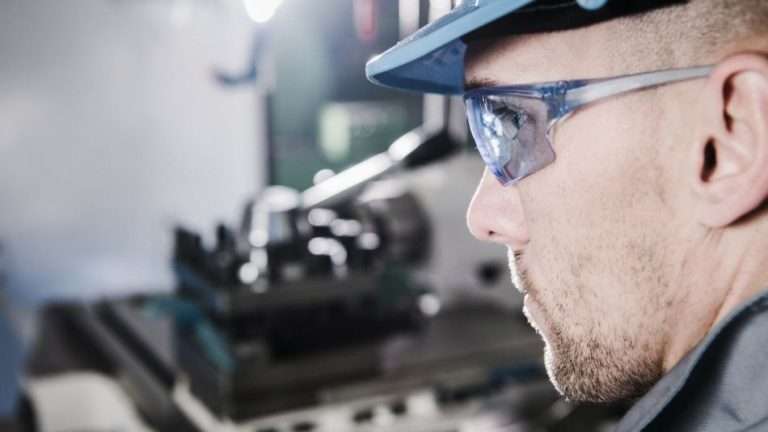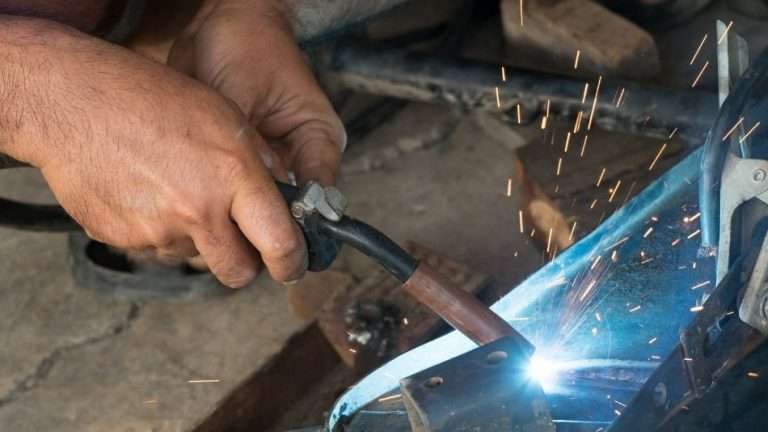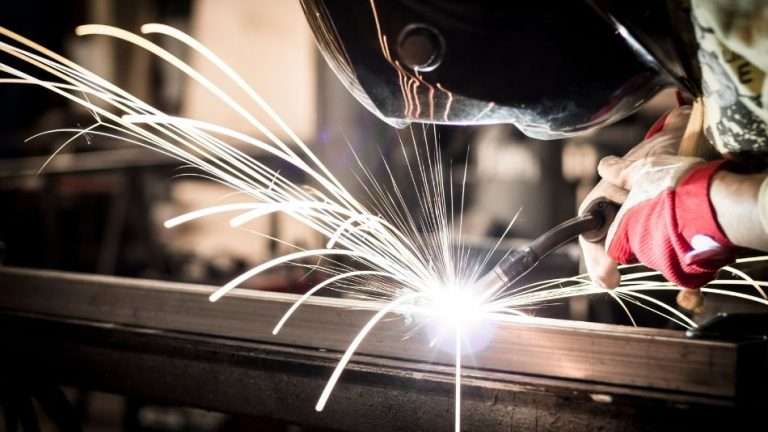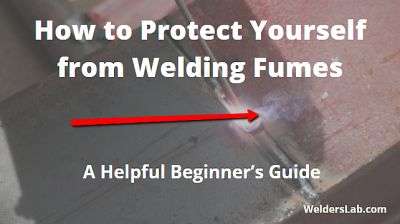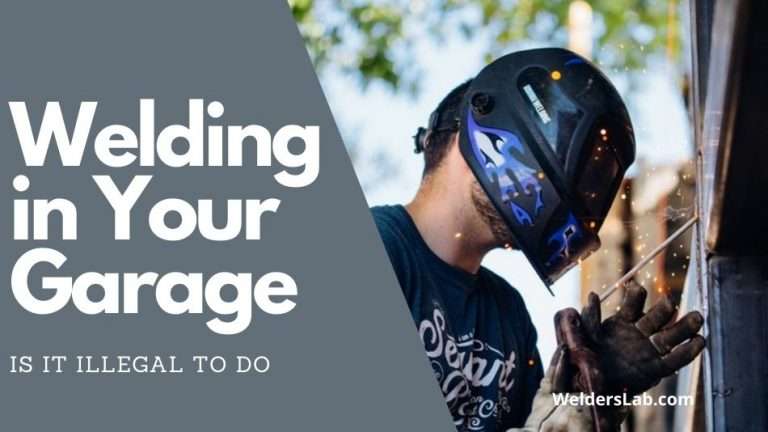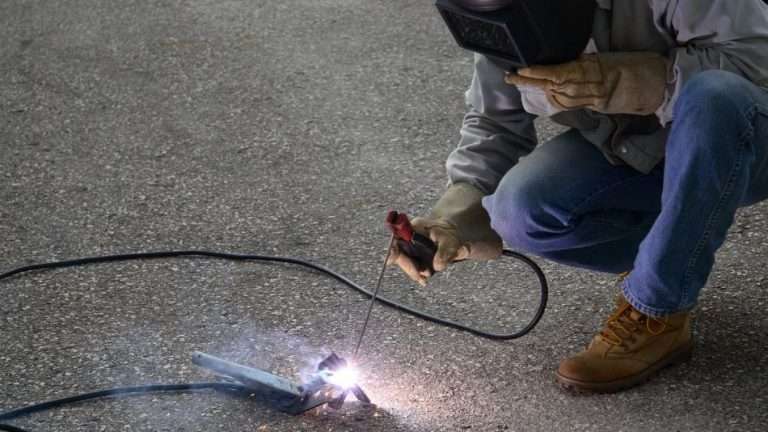Is It Safe Weld Wet Metal (Safety Guide)
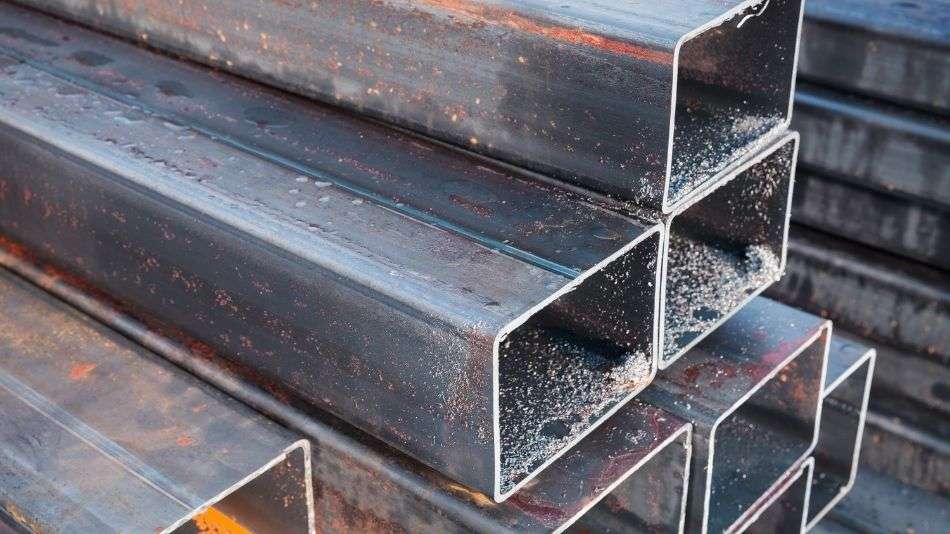
If there is one thing I know, welding and water don’t mix. Even if you’re doing underwater welding it can still be dangerous. In fact, over the years I’ve even be zapped a time or two. The question is, is it safe to weld wet metal, and what do I do to stay safe.
Welding wet metal is not a safe practice. The water can act as a short between the positive and negative and instead of going through the ground clamp on your welder it way short out on you causing you to get zapped. Instead, make sure the metal is completely dry before welding.
In this article, I’m going to cover why welding wet metal is not a good idea, how to prepare it if it is wet and what to do if you can’t stop the metal from being wet. So if this is an issue you’re dealing with then keep reading.
Why Welding Wet Metal is Not a Good Idea
When it comes to metal and water they are both great conductors of electricity. Combine them together while you are welding and that’s not so good. Your chances of getting shocked, or even worse killed go up dramatically if you plan to weld on it.
I can remember one time in particular when I was welding on a piece of sheet metal that was wet. At first, I didn’t think anything of it. I figure that if I had heavy work boots on with rubber soles there was no way I would not get zapped.
Related Article: Can You MIG Weld in the Rain – Is It Safe or Not
However, while I was welding the sheet metal I happen to lean against the table I was welding on. That was all I needed to do and zap! I got a nice shock from the welder for not obeying the laws of physics.
So why did this happen?
Electricity will always take the path of least resistance. While I was leaning again the table my elbow was touching a spot of water on the sheet metal and created a short.
A short is a simple way of saying the electricity found a faster way to the ground other than going through the ground clamp which so happens to be my elbow giving me a nice shock. Thankfully, that’s all that happened to me but it could have been much worse.
How to Prepare Wet Metal For Welding
So now that we know welding metal that is wet is not a good idea. What can you do to prepare the metal for welding so you don’t get shocked?
Dry The Metal Off
The first step is to dry off the metal as best as you can. I like to use cotton towels because they work the best at absorbing the water on the steel.
Try to get as much of the water off of the steel as best as you can. However, once you have the metal dry it still may not be dry enough
If the metal is constantly getting wet due to some other external factor then it’s good to find a way to keep the water from getting on the steel. I’ll talk about this after a bit.
Use a Fan
Once you’ve dried off the metal you’ll want the metal to sit for a bit so the remaining moister can evaporate. To help speed this up I like to put a fan on the metal. This will help the material dry fast.
In most cases I like to use a good floor fan that can push a lot of air and dry things off quickly.

Lasko has nice 20″ fan that works great for this job and best of all it pushed between 3160 to 3460 CFM’s.
Set Your Ground
Finally, the last thing you can do to improve your chances of not getting shocked is to set your ground so it is directly hooked up to the metal you are welding.
This will give you the best ground possible. If you hook your ground to a secondary source like your welding table then the electricity will have to travel through part, and through the table before fully grounding out.
What If I Can’t Stop The Metal From Being Wet
Now, what if you can’t stop the metal from being wet. What if you have to weld a pipe that gets a permanent drip on it, or what if you’re working on something that gets a constant stream of water on it?
If this is your situation then here are a few tips to help you out.
Use a Cover
The first tip is to find a way to cover the spot from getting wet. If water is dripping on your metal then find a bucket. If you have water coming from multiple directions then use a tarp. Even a piece of plywood will work here.
Once the water is off of the area you plan to weld make sure you dry it off following the tips I provided above.
Use Rubber Mats
Another way to add an extra layer of protection is to stand on a rubber mat.
This will insulate you from getting shocked. Even though you should be wearing heavy-duty steel toe work boots with a thick rubber sole a mat can provide that extra layer of protection.
After all the last thing you want to do is stand in water while you welding as this could be extremely dangerous.
Don’t Touch the Metal
Finally, if you are welding metal that is wet and you can’t avoid it at all cost then don’t touch the metal you are welding. By not touching the metal you avoid getting shocked.
I say this because a lot of time when you are welding people lean over or brace themselves on something to get a steady hand while welding.
Instead, you will have to use one had to weld with and the other hand to brace your welding arm so you don’t touch the metal.
Could Welding Wet Metal Kill You?
In most cases, welding on wet metal will result in a simple shock. However, this still could be fatal depending on the situation. If you were to be standing in an inch of water wearing flip-flops running an 800 amp welder it could be highly dangerous.
I’ve personally never known anyone to get killed from welding wet metal but that still doesn’t mean that it could happen. If you were in the wrong situation welding wet metal, standing in water the odds are probably not in your favor here.
My best advice here is to avoid water at all cost when welding because it can be dangerous.

